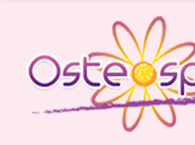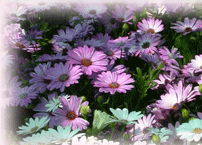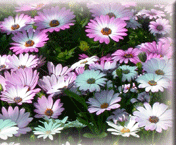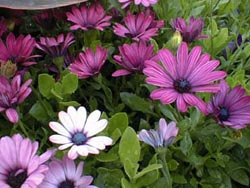



Osteospermum SeedIt is not recommended to collect seed from Osteospermums. Most Osteospermums are hybrids and the resulting seedlings will not come true to the original plant. This means that the resulting plants will never be identical and can therefore not be given the same name as the original plant. Osteospermum hybrids must be propagated by cuttings.
Sow seeds of Passion Mixed from February to May at 18-20c (64-68F) on a good free draining damp seed compost. A fine sprinkling of vermiculite must be applied, but do not cover the seed completely. Place in a propagator or seal the container inside a polythene bag until after germination (up to 14 days). Do not exclude light, as this helps germination. When the seedlings are large enough to handle, transplant them into 7.5cm (3 inch) pots. Then grow on in cooler conditions before planting out after all risk of frost has past. Plant 30cm (12 inches) apart. Like all Osteospermums they prefer well drained soil in full sun.
Dimorphotheca Seed Dimorphotheca is NOT an Osteospermum - Dimorphotheca is a hardy annual
Common names are: Star of the Veldt - African Daisy - Cape Marigold - Rain Daisy - Namaqualand Daisy The word Dimorphotheca means: two shapes of seed. That's because the plant produces two totally different seed forms: Some are small and triangular and some are flat seeds. WARNING: At present some of the reputable seed companies are incorrectly selling 'Dimorphotheca' under the name 'Osteospermum'. You will have to draw your own conclusions as to why they are doing this!! One company is even selling 'Livingstone Daisies' ('Mesembryanthemum') under the name of 'Osteospermum'. We recommend to first check if you are really buying 'Osteospermums' before ordering seed.
Dimorphotheca Species:
Dimorphotheca Hybrids:
To learn more about Dimorphotheca, please visit our page on Types of Osteospermum. |
